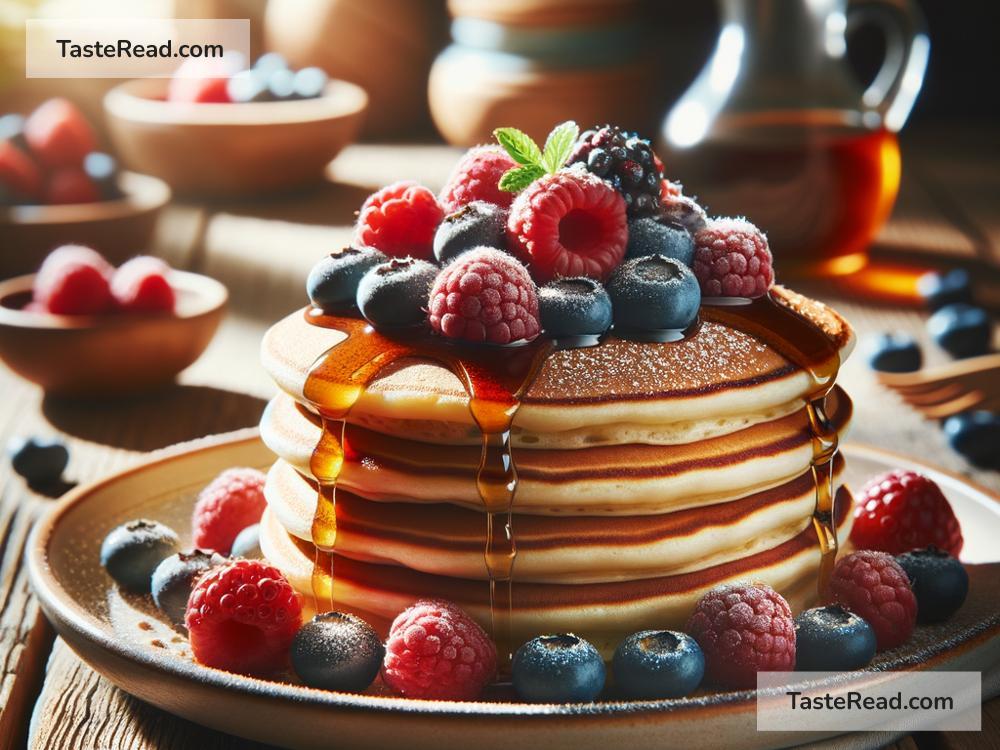How the American Pancake Became a Breakfast Tradition
The American pancake, fluffy and round, drizzled with maple syrup and sometimes topped with a pat of butter, is the star of breakfast tables across the United States. But how did this simple dish, made from just flour, eggs, milk, and a leavening agent, claim its rightful place as a cherished breakfast tradition? Let’s dig into the history and evolution of the American pancake to understand its journey from humble beginnings to breakfast fame.
The Origins
The story of the pancake stretches back thousands of years, with variations of it appearing in the earliest civilizations. The ancient Greeks and Romans ate pancakes, sweetening them with honey, while in the Elizabethan era, spices and rosewater were popular additions. However, the American pancake, as we know it, began to take shape with the arrival of European settlers in North America.
Arrival in America
When European settlers came to North America, they brought with them the tradition of making pancakes. They encountered Native Americans making a form of pancake with cornmeal. The settlers began adapting their recipes to incorporate newly discovered ingredients, such as maize, which was introduced to them by the Native Americans. This led to the creation of variations such as johnnycakes, which are a type of cornmeal flatbread.
The Rise of Baking Powder
The real transformation of the pancake into the fluffy stacks we adore today began with the introduction of baking powder in the 19th century. Before baking powder, making pancakes fluffy required beating air into the eggs, but baking powder made the process much easier and more reliable. With this new leavening agent, pancakes became lighter and airier than their predecessors.
From Fancy to Everyday Fare
Initially, pancakes were not confined to breakfast and were eaten at any meal. They were often a treat reserved for special occasions because making them was labor-intensive. However, with the advent of convenience foods in the early 20th century, pre-mixed pancake batters and syrups became available, making pancakes easier to prepare. This accessibility transformed pancakes from a special-occasion dish to an everyday breakfast staple in American households.
The Diner Effect
The popularization of diners in the 20th century played a significant role in cementing the status of pancakes as a breakfast tradition. Diners, with their extensive breakfast menus served all day, often featured pancakes as a highlight. This further ingrained pancakes in American breakfast culture, making them synonymous with the first meal of the day.
Pancakes Today
Today, pancakes hold a firm place in the hearts (and breakfast tables) of Americans. They’re not just food; they’re a canvas for creativity. From the classic buttermilk pancake to eclectic variations like blueberry, chocolate chip, or pumpkin spice, there’s a pancake for every palate. Pancake breakfasts, whether at home or in diners, bring people together, making them a symbol of comfort and conviviality.
The Tradition Continues
Beyond the basic recipe, pancakes have become a way for families to bond and create traditions. Many Americans have memories of lazy weekend mornings with loved ones, flipping pancakes and trying to catch them in the pan. This tradition of making and enjoying pancakes together has been passed down through generations, keeping the love for pancakes alive.
Conclusion
The journey of the American pancake from a simple, versatile staple to a beloved breakfast tradition is a testimony to its adaptability and the cultural melting pot that the United States represents. The pancake’s evolution reflects changes in technology, dietary habits, and social customs over the years. Yet, through it all, pancakes have retained their status as a comforting, beloved food that brings people together. Whether it’s a stack of fluffy buttermilk pancakes on a sunny morning or a creative twist on the classic recipe, the American pancake remains a cherished symbol of breakfast and beyond.
